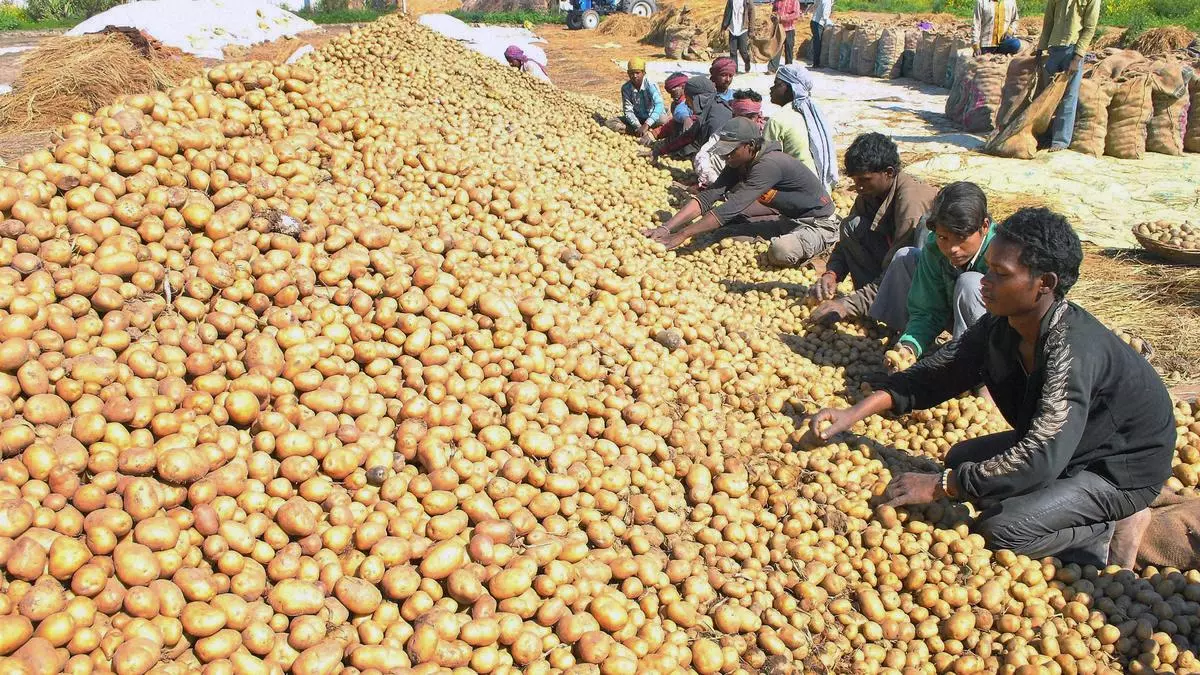Potato to drive veggie inflation to double digits
Vegetable inflation for April is expected to hit double digits with potatoes leading the pack in over 12 per cent rise in one month and around 37 per cent over a year. Vegetable along with overall retail inflation based on Consumer Price Index (CPI) will be made public on May 13.
Vegetables have a weight of around 7.5 per cent in headline retail inflation. Also, they have a share of over 15 per cent in food inflation. A key factor in rise in vegetable prices is erratic weather alongside pest attacks. According to Crisil, vegetable inflation in India remains the most volatile component of food inflation.
Data from Price Monitoring Division of Consumer Affairs, as on May 4, showed that all India average retail prices surged to ₹28.2 per kg from ₹25.27 per kg a month ago and ₹20.60 per kg a year ago. Though onion and tomato prices have done come down on monthly basis, but on yearly basis, these are still very high. Onion prices dropped to ₹32.22 per kg from ₹32.53 per kg but higher than ₹22.37 per kg a year ago. Similarly, tomato prices slipped a tad to ₹32.22 per kg from ₹32.53 per kg a month ago but higher than ₹23.46 per kg a year ago.
Onion concern
Downward trend is expected to continue in tomato. However, there is concern about onion as the Rabi onion production is set to dip to 191 lakh tonnes in 2023-24 (July-June) as against 236 lakh tonnes a year ago, a fall of 19 per cent. Rabi onion is critical for the country’s onion availability as it contributes 72-75 per cent of annual production. The Rabi crop is also crucial for ensuring year-round availability of onion as it has a better shelf life compared to Kharif onion and can be stored for supplies till November-December. This may fuel the prices of onion in coming months. It may be noted that price movement of TOP (tomato-onion-potato) is critical in overall food as well as headline inflation.
According to Paras Jasrai, Senior Analyst with India Ratings & Research (Ind-Ra), the prices of various vegetables remain elevated. “This would keep the overall vegetables inflation in double digits in April 2024 like the past few months,” he said. Similarly, in a recent report, Crisil said that although vegetable price shocks are transient and dissipate as fresh stocks arrive in the market, repeated shocks could bring persistence to vegetables and hence food inflation. Hence, it is crucial to adopt measures such as improving cold storage facilities, promoting use of hybrid weather resistant seeds and reducing post-harvest losses.
“The IMD has predicted an above-normal southwest monsoon in 2024. This augurs well for vegetables prices, but the distribution of monsoon is also crucial. IMD expects above-normal temperatures till June, which could keep vegetable prices elevated for the next few months,” Crisil report said.
Now the big question is what will be impact on headline inflation. Jasrai said: “the overall inflation would remain within the tolerance band of the RBI due to moderation in core inflation and the deflation of fuel and light items.
